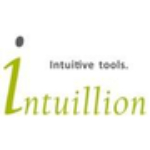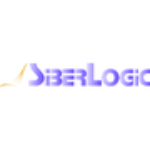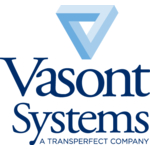TechnologyCounter provides genuine, unbiased real user reviews to help buyers make informed decisions. We may earn a referral fee when you purchase through our links, at no extra cost to you.
List of Best Component Content Management System
Showing 1 - 7 of 7 productsSirius CMS is the innovative content management system designed to streamline your website editing process and enhance your online presence. With its user-friendly interface and powerful features, Sirius CMS empowers users to effortlessly create, edi...Read Sirius CMS Reviews
CloudCannon is revolutionizing how websites are created and managed. As a leading cloud-based web development platform, CloudCannon empowers users with its intuitive interface and seamless collaboration capabilities. Say goodbye to cumbersome softwar...Read CloudCannon Reviews
DITAToo is a tool designed to simplify the creation, management, and delivery of technical documentation. With its intuitive interface features, DITAToo streamlines content development and revolutionizes the way organizations handle their documentati...Read DITAToo Reviews
Paligo is a content management solution that streamlines your technical writing process like never before. With its intuitive interface and robust features, Paligo allows you to effortlessly create, manage, and publish your content in multiple format...Read Paligo Reviews
RSuite CMS the ultimate content management system designed to streamline, organize, and maximize your content creation and management processes. With its advanced features and user-friendly interface, RSuite CMS empowers businesses and teams to effic...Read RSuite CMS Reviews
SiberSafe S1000D is a solution for managing and publishing technical content. Designed with efficiency and ease in mind, our software streamlines the authoring, management, and publishing process to ensure that your technical publications are accurat...Read SiberSafe S1000D Reviews
Vasont CMS, a leading content management system, offers powerful and versatile solutions for managing and organizing your content in a seamless is a manner. With advanced features and user-friendly interface, Vasont CMS empowers users to streamline t...Read Vasont CMS Reviews
- What Is Component Content Management System?
- Top Reasons Why Businesses Need Component Content Management System?
- What are the top Key Features of component content management system?
- What Are the Top Benefits of Component Content Management System?
- What Are the Steps to Choose the Right Component Content Management System?
- What Are the Types of Component Content Management System for Different Industries?
- What Are the Technology Trends for Best Component Content Management System?
- What Are the Deployment Options for Component Content Management System?
What Is Component Content Management System?
A component content management system (CCMS) is a software system designed to facilitate the management of the content generation process. The practice of ensuring consistency, accuracy, and currency of documents and other items is beneficial. Additionally, it aids in the optimization of the procedures involved in the development and upkeep of products.
The Content Component Management System operates by dividing content into discrete units known as "components," encompassing various aspects such as text, graphics, audio, and other multimedia components. The aforementioned components are maintained within a repository, which numerous individuals and teams frequently access.
The present repository provides users with the capability to access, modify, and monitor alterations to individual components, hence obviating the need to oversee the complete product whenever a modification is implemented.
The component content management is capable of facilitating the management of essential workflows involved in content creation or revision, including but not limited to tasks such as reviews, approvals, translations, and proofreading. This practice facilitates adherence to deadlines and ensures that all individuals involved in the process are informed about the most recent iterations of material.
Additionally, it aids in the prevention of redundant efforts and promotes uniformity among individuals by ensuring that they are all operating with identical content. In general, the CCMS content management) is a robust solution that benefits organizations seeking to manage and generate content effectively.
The utilization of the best component content management system facilitates the division of material into distinct components, the efficient management of processes, and the systematic monitoring of modifications. Consequently, the CCMS plays a pivotal role in guaranteeing the accuracy and currency of content at all times.
Top Reasons Why Businesses Need Component Content Management System?
1. Reduced translation costs: A Component information Management System facilitates the efficient management of information across several languages for enterprises, enabling enhanced tracking and reuse of pre-existing content.
2. Improved content accessibility: By consolidating content into a single repository, organizations can offer easily discoverable and accessible information.
3. Increased efficiency: A Content and Curriculum Management System (CCMS) streamlines the process of generating standardized content and minimizes the need for manual labor in content generation.
4. Enhanced collaboration: A CCMS content management facilitates enhanced collaboration among coworkers, whether close or distant places, by offering a streamlined method for sharing and reviewing papers.
5. Simplified authoring: A Content Creation and Management System (CCMS) can enhance the efficiency of the content authoring process by offering users a standardized collection of pieces, enabling them to generate material in a more expedited manner.
6. Improved scalability: The implementation of a Content and Document Management System (CCMS) facilitates the efficient handling of extensive quantities of documents and content items by enterprises. This capability streamlines the process of expanding operations and incorporating novel goods.
7. Better integration: The utilization of a component content management facilitates the seamless integration of pre-existing systems, such as a Content Management System (CMS) and a Product Information Management (PIM) system.
8. Improved privacy: A Content and Collaboration Management System (CCMS) offers enhanced security measures for the preservation of sensitive information and assists organizations in fulfilling regulatory compliance obligations.
9. Improved content quality: A top component content management system can enhance content quality consistency by offering templates and improved tracking tools.
10. Improved search: A material and Collaboration Management System (CCMS) has the potential to augment search functionalities, hence facilitating users in efficiently locating the specific material that aligns with their requirements.
11. Enhanced analytics: A Content Management and Measurement System (CCMS) offers a range of metrics and reporting tools that enable the evaluation of content marketing effectiveness.
12. Simplified content reuse: An information and Channel Management System (CCMS) facilitates the efficient reuse of diverse information across many formats and channels, hence enabling enterprises to achieve time and cost savings.
13. Cost savings: The best component content management system has the potential to assist enterprises in cost reduction by streamlining manual operations and facilitating simplified document development.
14. Improved customer service: By implementing an improved method for accessing client content, organizations can effectively decrease the duration of customer support calls and foster the development of customer loyalty.
15. Enhanced scalability: A Content and consumer Management System (CCMS) can facilitate the expansion of corporate operations in response to escalating consumer demand and content volume.
What are the top Key Features of component content management system?
1. Version Control: Component content management systems (CCMS) enable the tracking and management of several iterations of content, providing the capability to revert to previous versions as necessary.
2. Structured Content: A key characteristic of an effective content management system is the presence of organized and well-structured content. The utilization of structured content facilitates authors in effectively managing their content in a systematic and orderly fashion, hence enhancing the ease of reusing and repurposing information.
3. Automated Delivery: The implementation of automated delivery enables the system to autonomously adapt the material to align with the specific requirements of the destination or channel. The system possesses the capability to direct content towards appropriate channels and facilitate its seamless integration.
4. Collaboration: Content management systems (CMS) facilitate collaborative efforts among different users, enabling them to provide feedback during the creation process and obtain input from stakeholders. Ensuring accuracy and establishing a platform for conversation and content improvement are key objectives in this context.
5. Multi-Channel Publishing: The best component content management systems (CCMS) enable the publication of material across many channels, facilitating the effective reuse of content. The adaptability of content allows for real-time modifications and its dissemination across many formats and platforms, hence enabling effective targeting of the intended audience.
6. Content Lifecycle Management: CCMS content management is responsible for the management of content throughout its lifecycle, enabling the archival or deletion of content as required. This particular characteristic facilitates the transmission of content in a streamlined and effective manner.
7. Digital Asset Management: Top component content management systems (CCMS) also offer a digital asset management (DAM) capability, facilitating the storage and organization of various digital assets utilized by writers in their respective tasks. The aforementioned functionality holds significant importance in guaranteeing the secure logging and storage of digital assets.
8. Robust Security: The incorporation of robust security measures inside a content management system is of paramount significance, as it serves to safeguard the content from unwanted access. Component content management systems (CCMS) provide comprehensive security measures to safeguard the integrity and confidentiality of the content, hence ensuring its continued protection.
What Are the Top Benefits of Component Content Management System?
1. Increased efficiency: Component Content Management Systems (CCMS) aid organizations in enhancing content management efficiency through the optimization of the many processes involved in content generation, maintenance, and delivery.
This feature enhances the productivity of authors by facilitating their focus on the act of writing itself, rather than diverting their attention towards the tasks of formatting and content management.
2. Enhanced Quality Control: The utilization of CCMS content management enables firms to uphold uniformity in their content, facilitating the establishment of review cycles and audit trails that guarantee precision and adherence to regulations. Ensuring the quality and consistency of content, both in terms of its presentation and factual correctness, is of paramount importance.
3. Improved Content Reuse: The utilization of component content management enables companies to optimize their content resources by facilitating the decomposition of material into discrete components that can be employed in other documents. This obviates the necessity of generating content again on each occasion it is employed, resulting in time and cost savings.
4. Comprehensive Search and Retrieval: The best content management systems (CCMS) enhance the efficiency of content retrieval by offering robust search functionalities that facilitate the prompt and precise identification of desired information.
5. Integration with other systems: The integration of top component content management systems with other systems, such as product support and delivery, facilitates the seamless access and utilization of content held in diverse repositories, hence enhancing organizational efficiency.
What Are the Steps to Choose the Right Component Content Management System?
1. Assess your needs: Please identify the organizational goals and analyze the content that requires storage and management. When making decisions about accessing information, it is important to carefully consider the sorts of devices that will be utilized, the number of people that will require access to the system, and the scalability requirements of the company.
2. Research content management systems: It is imperative to conduct an assessment to ascertain whether the selected system aligns with both immediate and future requirements. This analysis will focus on evaluating the user interface, security, scalability features, and support choices of the system.
3. Test the system: Develop a controlled experimental setting to assess various content management systems while mitigating potential hazards to the operational environment.
4. Analyze the costs: It is necessary to conduct a comparative analysis of the initial and ongoing costs associated with various systems to ascertain the optimal value proposition.
5. Evaluate customer service: This analysis aims to evaluate the customer assistance alternatives available for each system and assess the level of responsiveness exhibited by their respective support teams.
6. Develop an implementation plan: The objective is to establish a schedule for the implementation of the system and identify the individuals or entities accountable for its administration.
7. Execute the rollout: Adhere to the prescribed implementation strategy and ensure that all users are provided with sufficient training to efficiently utilize the system.
What Are the Types of Component Content Management System for Different Industries?
There exists a variety of component content management systems (CCMS) that cater to diverse industries, tailored to address the unique requirements of each respective sector.
In a general sense, these can be categorized into three distinct groups, namely:
1. Technical Writing CCMS: The best CCMS content management under consideration is tailored to meet the needs of enterprises that engage in the regular production of technical manuals and instructional materials. The technical writing process is fully automated by the system, which includes functionalities like as version control, single source publishing, and automated indexing.
2. Regulatory Driven CCMS: These systems are specifically tailored for enterprises that are required to adhere to particular regulatory norms, as observed in industries such as pharmaceuticals and medical devices.
The top component of content management provides functionalities such as automated change monitoring and control, real-time compliance checks, and complete document archiving.
3. Information Centric CCMS: This particular material and Customer Management System (CCMS) is specifically tailored for large-scale organizations engaged in the production and administration of many forms of informational material, including but not limited to blogs, news stories, and other multi-channel documents.
The aforementioned technologies have been specifically developed to streamline the entirety of the content generation process, encompassing activities such as research, drafting, revising, and publishing.
What Are the Technology Trends for Best Component Content Management System?
The current technological advances pertaining to the optimal component content management system encompass
1. Cloud-Based Component Content Management – Cloud-based the best component content management systems (CCMS) provide organizations with the ability to effectively manage material from any location, thereby enhancing flexibility.
Additionally, these systems ensure secure access for users, thereby safeguarding sensitive information. Cloud-based solutions offer the advantages of scalability and cost efficiency.
2. Cross-Platform Capabilities – Top component content management systems (CCMS) possess the capability to effectively interface with various systems, including enterprise resource planning (ERP) and electronic commerce (e-commerce) systems.
This integration empowers businesses to optimize their operational workflows and ensure the timely maintenance of their content.
3. Automation – Automated functionalities should be incorporated into component content management in order to provide efficient and precise content updates. Automated functionalities encompass automated indexing, automated publication, and automated web indexing.
4. Workflow-Driven Content Management – Component content management (CCMS) should possess the capability to effectively serve teams located in various departments and locations through the provision of efficient workflow management functionalities.
This encompasses the capacity to monitor the advancement of the content generation or modification procedure, allocate responsibilities, and establish time limits.
5. Reporting and Analytics – It is imperative for the best component content management systems to possess the capability to offer extensive reporting and analytics functionalities. This enables enterprises to effectively monitor performance and gain insights into the utilization of their content.
What Are the Deployment Options for Component Content Management System?
The deployment options for a component content management system (CCMS) exhibit variability, encompassing on-premises deployment, where the system is housed on internal servers within an organization, and cloud-based deployment, which relies on an external server and may be accessed online.
Multi-tenant and single-tenant solutions are widely utilized deployment choices for the best component content management systems. Multi-tenant solutions, such as Software-as-a-Service (SaaS) solutions, function by utilizing shared resources among multiple users, whereas single-tenant solutions are designed to cater exclusively to the needs of a single user.
Multi-tenant systems are widely seen as being more economically advantageous owing to their ability to consolidate operational costs. Conversely, single-tenant solutions generally provide greater flexibility and authority in terms of system modification, functionality, and data management.







